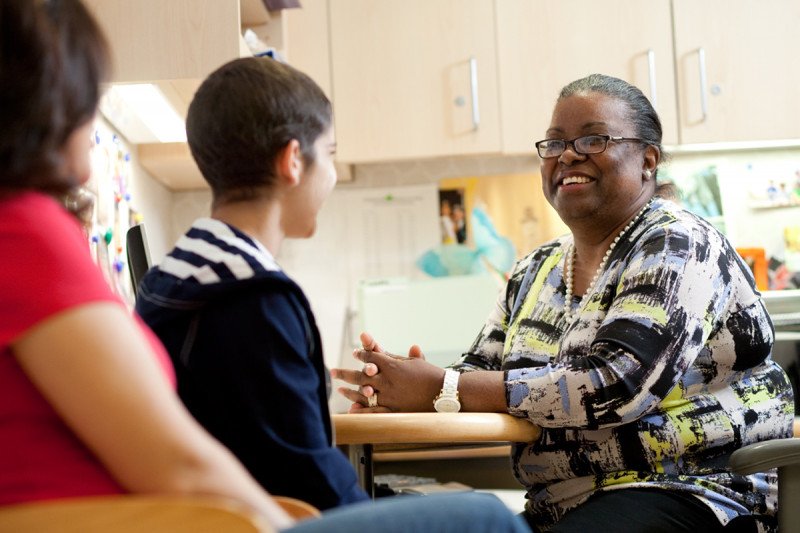
Pediatric oncologist and clinical researcher Tanya Trippett talks with a young adult patient and family.
Different studies have different goals. If your child’s doctor has raised the idea of a clinical trial or if you’re looking into them yourself, you may read about the different “phases” of these studies. Here is some information about the four phases of clinical trials:
- Phase I clinical trials help researchers find the best dose of a new therapy that can be given safely to patients. These studies typically have a small number of participants, often fewer than 20.
- Phase II studies continue to evaluate the safety of a new treatment and also begin to assess its effectiveness. These clinical trials usually enroll more patients than phase I trials.
- Phase III studies compare the effectiveness of a new therapy or a new combination of therapies with standard treatment. These studies are much larger, often involving hundreds and sometimes thousands of patients. Phase III is typically the last phase of a new drug’s development before it is approved by the US Food and Drug Administration (FDA).
- Phase IV trials continue to study the safety and effectiveness of a treatment after it has been approved by the FDA. Not all drugs go through phase IV studies.
Memorial Sloan Kettering has unique capabilities and resources to conduct early-phase (phase I and II) trials. Children, teens, and young adults treated at MSK Kids have access to many clinical trials, some of which are only available here. We also participate in many national collaborations, including with the Children’s Oncology Group and other multicenter studies. We do all we can to make the latest clinical trials available for young people with cancer.

